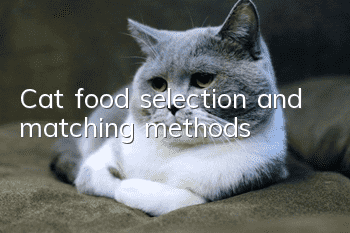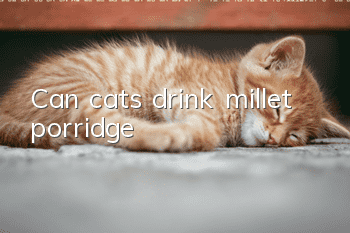Cat food selection and matching methods

1. Price
Everyone’s economic conditions are different, so when choosing cat food, you should have a price positioning.
A high price is not necessarily good, and a low price is not necessarily bad.
2. Smell, rub, look, and soak cat food
Smell:
Cat food should smell natural.
If it smells too fragrant or has a pungent aroma, it is likely that fragrance has been added.
If it smells moldy, you can conclude that it is expired or low-quality food.
Rubbing:
Knead the cat food with your hands. If your hands are greasy, it means it contains a lot of oil, so it is not recommended. It will affect the cat’s gastrointestinal digestion and cause obesity.
If it becomes deformed or brittle after rubbing, it can be judged as inferior food.
Look:
Cat food with darker colors has more fresh meat content in the raw materials.
Cat food with lighter and yellower colors generally contains more flour or starch.
Cat food that is too brightly colored is likely to have added pigments.
Bubble:
After soaking the cat food in warm water above 80°C:
The water is clear, without floating oil or impurities, indicating that the cat food is of good quality and the raw materials are more natural.
If the granules expand too much, it means that the starch content is larger and the fresh meat content is smaller.
3. Natural grains & commercial grains
Natural food refers to the use of fresh meat, unprocessed, and no preservatives and additives added.
Commercial food refers to the use of animal carcasses and offal, processed food, and contains additives and preservatives.
Actually, it’s not that serious. Natural grains were once very popular and the prices were relatively high. In fact, no one can guarantee that natural grains must be made of fresh meat and natural ingredients; while commercial grains must be made of dead poultry, offal and additives. . Therefore, it is recommended to focus on the content of the main ingredients.
4. Content of main ingredients
1. Crude protein: between 28% and 42%, at least 25% for adult cats.
2. Crude fat: between 14% and 20%. For elderly cats, about 10% is enough.
3. Crude fiber: between 1% and 5%. It is recommended not to choose anything higher than 5%.
4. Coarse ash content: less than 10%.
5. Taurine: 0.2%-0Between .25%.
6. Minerals: mainly calcium and phosphorus, both of which contain about 1%.
7. Cat food should be chosen that does not contain phagostimulants and thickeners.
8. Cat food should contain meat, and the meat should be ranked higher in the ingredient list. The higher the ranking, the higher the content. If there is no meat and only meat meal or bone meal, it is recommended not to use it. chosen.
5. It is recommended not to just feed cat food, but to add 3-4 meals of meat (boiled/steamed) every week.
6. Mix dry food and canned food
1. Canned food can increase the cat’s appetite, but canned food is made of meat and contains more or less preservatives. It is recommended not to feed too much.
2. Do not eat it with dry food, and feed it at least 2 hours apart.
3. It is recommended not to feed cats that are prone to diarrhea or to feed them less canned food.
4. It is recommended to brush your cat’s teeth regularly when feeding canned food for a long time.
7. Palatability
Pet food palatability was first proposed by Mr. Wang Tianfei, a famous senior pet nutritionist in China.
To put it simply, cats with good palatability will love to eat it, while cats with poor palatability will probably not eat it. Cats who are picky eaters should take this into special consideration.
8. Grain-free
It means that it does not contain corn, wheat, cereal husks and other cereals. Mainly, grains will affect cats' absorption of protein. In addition, some cats will have allergic reactions to grains.
- Why does the cat vomit after eating it?
- How often should cats take deworming medicine?
- Cat’s belly is sagging like a water bag
- There is a soft bump on the cat’s belly
- What should I do if my kitten keeps meowing? The main reason is because I miss my mother.
- Why does your cat ignore you when you call it by its name?
- How to treat ringworm in cats
- How big can an adult Ragdoll cat grow?
- Can cats eat pork?
- What does it mean when a cat wags its tail?



